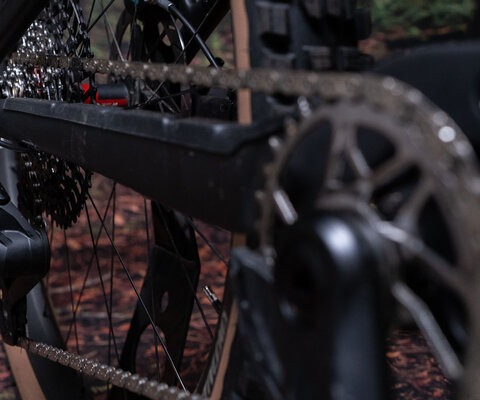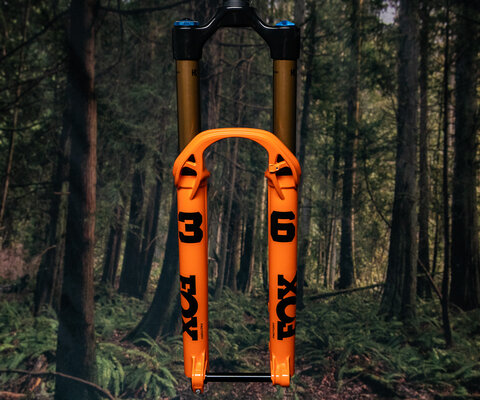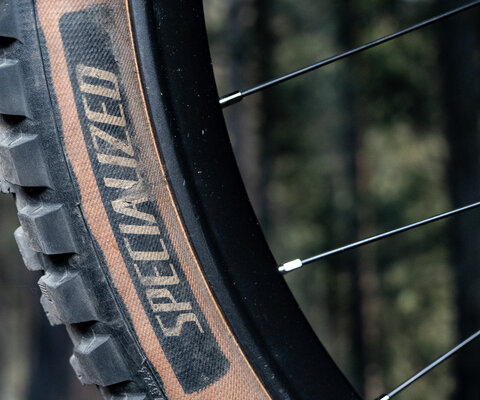It Takes a Village - Mike McCormacks Far-Flung Audacity and Down-Home Immersion
When Mike McCormack talks, people listen.
He doesn’t waste words, a brevity that only serves to make his gentle-yet-friendly voice more effective. It’s a useful trait, especially when you’re addressing a mayor, city council or a few thousand mountain bikers at the start line of one of the world’s toughest competitions.
Founder of Colorado’s Breck Epic stage race, McCormack’s usual business attire of shorts, tilted cowboy hat, flip flops and ready smile belie exactly how busy his schedule is. McCormack has become a renowned behind-the-scenes figure in the Rocky Mountain bike scene, putting it on the international map of ultra-endurance racing and helping shape riding in the area on a day-to-day level in every community in which he’s lived. As McCormack has proven, sometimes the shortest sentences can have the deepest tread.
The first time McCormack ever pooped outside was during his first job as a corn de-tassler in middle school. It was a mortifying experience and terrible work, and his mom let him quit after four days. But there are few things that teach a good work ethic better than being miserable, and it wasn’t enough to drive him away from his hometown of Madison, WI—at least not immediately.
McCormack attended college in Madison, first for a degree at the University of Wisconsin-Madison and then a culinary degree at a local tech college (or “more a program that taught you how not to poison the elderly in an institutional setting,” as McCormack puts it). With corn farming out of the question, he got a job at Madison-based Trek Bicycle, first as a rep for Bontrager and Klein in Berkley, CA before moving to Waterloo, WI to take the role of marketing and brand manager for the same labels. It was a position that didn’t suit him, and “after wearing the hell out of his welcome at Trek” McCormack decided to head west once more, this time permanently.
He moved to Breckenridge in the spring of 1999, where he made use of his culinary degree as a cook at a high end tapas restaurant in the small town. The job was a much needed mental detox from the cycling world. It also unknowingly set him up for an unofficial education in his future career.
“Somewhere in the middle of all of the bike stuff I pulled a long stint running Breckenridge Ski Resort’s Competition Department, and from there joined the marketing staff at Beaver Creek,” he says. “It was these last two stops that really helped form my understanding of the true economic impact of events. Those two groups, while operating at extreme ends of the snow sports spectrum, are truly best-in-class examples of how to produce large events with multiple stakeholders, and produce them well.”
His chance to apply that knowledge to the cycling world wouldn’t begin until he met Jeff Westcott. Westcott first moved to Colorado for the winter of 1984 from his native Massachusetts, and when he and McCormack were introduced in the summer of 1999 he was organizing ski events for the Team Breckenridge Sports Club. He was also talking to Greg Guras, the owner of Breckenridge’s “A Racer’s Edge” ski shop, who had been running a weeknight MTB series called the Summit Mountain Challenge (SMC) for over a decade.
Guras was getting burnt out on the sizeable amount of necessary logistics, and as the three continued to talk, Westcott and McCormack became increasingly keen to be involved. They jumped in, and it didn’t take long for the duo’s ambitions to extend past the SMC. In the summer of 2001 the two started Maverick Sports Promotions (MavSports), an event organizing company.
“I consider Jeff to be my first wife,” says McCormack. “Our partnership was born, and with it came a revitalized SMC, the Firecracker 50 and Fall Classic, a standalone trail-building division, and MTB Junior League, an environmental stewardship-based kids program.”
The Fall Classic, which MavSports runs, began the same year Westcott moved to Colorado and is now one of the oldest mountain bike races in the world. The Firecracker 50, started in 2001 by McCormack and Westcott, is a 50-mile race held on July 4th. Both events are huge successes, having become staples in the mountain bike racing world and drawing large numbers of racers and spectators to the Breckenridge area.
At this same time, McCormack had met Chris Conroy, president of Yeti Cycles, through Conroy’s support of MTB Junior League. In 2005, Conroy and Yeti Vice President Steve “Hoog” Hoogendoorn were in negotiations to take over operation of the late Mountain States Cup, a popular race series spanning the hotspots of the Rockies. They needed someone on the ground, and McCormack had impressed.
“We talked for several months about the possibility of me getting involved with the MSC,” McCormack says. “One thing led to another, and I ended up working as the race director of the MSC and G3 Gravity Series for three seasons, from 2006 until 2008.”
The MSC ended in 2013 and the G3 Gravity Series in 2008, but by the time he left McCormack’s resume was a hefty one. That same year he was able to move on to an idea of his own: a stage race similar in scale to Europe’s Transalp or British Columbia’s TransRockies, but with each leg starting and finishing from the same location. And what better place to start than home?
Misery loves company—perhaps that’s the reason, despite being some of the most brutal forms of mountain bike events, ultra-endurance stage races are more popular than ever. While this can be seen in the success of newer venues such as the BC Bike Race, it was something McCormack experienced personally 15 years ago.
“I remember reading a story Mike Ferrentino wrote for BIKE Magazine in the late 90s,” McCormack says. “He’d ruptured his Achilles tendon during a long power line hiking section in Canada’s TransRockies. At the time, I was inspired by the audacity of such a far-flung event. The Firecracker 50’s popularity really validated the market for something like that.”
In stage races, “far-flung” doesn’t necessarily have to mean far from home. Breckenridge sits at the center of a truly massive trail network in Summit and Park counties, one that covers a vast spectrum of the terrain the area has to offer. The beauty of beginning and ending each stage in town is that it eliminates transfers, offers more lodging and eating options, and simplifies logistics for competitors in general. It’s another piece of wisdom McCormack has pulled from the Firecracker 50: the tenet “You bring your bike. Let us worry about everything else.”
This focused user-friendliness is an important thing—participating in any ultra-endurance event requires a big commitment, financially and time-wise, beyond the suffering of the actual race. For the Breck Epic, McCormack tries to handle such worries and issues before they arise, from aid stations mid-course to pre-race refunds up to 60 days out and no-penalty deferrals after that.
“When there is a problem, we listen,” McCormack says. “If we can fix it, we will. If we can’t, we explain why. Our riders get treated like family, even if life throws them a curveball and they need to back out of the race. Why? Because there are a lot of financially solvent races that could afford to adopt the same stance and don’t. But mostly, it’s because it’s the right thing to do.”
McCormack is quick to give credit to the many hands involved, the dedication and excellence of folks like Westcott and Chris Cawley, both of whom have been involved from the beginning. This includes the course markers, aid station workers and the many others necessary to create such an incredible experience for riders. It also translates into an incredibly popular race. Despite doing zero international advertising, the 2014 event hosted racers from 20 countries and 40 states. The Epic has also transformed many trails from local gems to international legends, stages like Wheeler, Guyot, the Colorado Trail and Gold Dust, to name a few. Because when it comes down to it, a race is only as good as its riding, and the Breck Epic can claim some of the best riding in the world.
The event McCormack is most vested in, however, is his family, which he refers to as “our little giggling, belching and tooting sausage party.” His wife Emily owns a local PR company, and his two sons, 8-year-old Jacob and 6-year-old Tavish—nicknamed MiniMac and Breck Epic Jr., respectively—are both active, energetic and mischievous. McCormack may be able to control a few thousand racers, but he credits Emily as being the one who keeps them from “all lighting ourselves on fire.” Emily and Mike bounced from Breckenridge, Edwards and Carbondale until finally settling on Eagle three years ago, a small town of 7,000 that offered ideal year-round weather with gratuitous riding and backcountry skiing opportunities.
Having already solidified the Breck Epic’s vaunted reputation, in Eagle McCormack found a place to employ his talents on a down-home level. The town asked him to consider helping with the Eagle Outdoor Festival, and over the past three years he’s helped develop a plan to cultivate Eagle’s status as a mountain bike destination. From a business perspective, the Festival makes local cash registers ring. From a biking perspective, it underscores just how much riding there is on the public land surrounding the town, an impressive network of trails shred-able year-round.
“The Outdoor Festival is a little bit of everything,” says McCormack. “A free consumer demo, along with a 40-mile XC course. The BLM just approved our big course this year, so riders can expect a true back-of-beyond experience, as well as a tour of some of Eagle’s best and most elusive gems. On top of that, we have a LoFi Chainless DH, a 10K trail run, a 5K run/walk and a grip of great food and live music.”
The trails around Eagle include over 13 miles of paved, in-town paths, and the inspiration for McCormack’s most recent endeavor came while riding along one of these with his kids. The entirety of the black-topped trail system is intertwined by short, dirt offshoots, unofficial side routes that young rippers started riding long ago. Watching his own kids, McCormack wondered at the possibility of formalizing these deviations to connect different parts of Eagle.
“To me, the best way to immerse yourself in a community is to add something to it,” McCormack says. “We wanted to get kids on their bikes before school and help provide them with five minutes of low-grade, gravity-fed bliss. At the same time, we wanted to create better soft-surface opportunities for local riders and runners, and connect the town’s core with its outlying trailheads and neighborhoods.”
McCormack went to work, bugging every elected official he knew and getting the blessing of the local trails group, The Hardscrabble Trails Coalition. The coalition’s president, Adam Palmer, is also the county planner. He fully jumped on the idea as well, creating user-friendly maps to present to the town council.
The two-pronged effort from McCormack and Palmer created a swell of public and civic support, including a solid “Hell Yeah!” from Mayor Yuri Kostick. Next came permission from some of the area’s main private entities, the Eagle Ranch Association and Homeowner’s Association, followed by a unanimous vote of approval from the town council. The project—dubbed “Singletrack Sidewalks”—was a go, and the pilot phase went into effect last fall.
“The idea was to get the community as a whole heavily involved,” McCormack says. “The program wouldn’t be happening without a heck of a lot of believers: moms, dads, prominent citizens and merchants, elected officials, school administrators. While it may have started with one person, everyone here has linked hands on this, which is a very good template for getting anything done.”
Even with most community members behind them, McCormack’s work at Eagle hasn’t been free of the usual user conflicts that plague such land access conversations. With so many parties involved—and so many false perceptions between user groups—it’s a difficult problem to solve, but McCormack feels community-oriented programs like Singletrack Sidewalks strike such issues at the core.
“To my way of thinking,” he says, “one of the best ways to combat the negative perception of cyclists is to build acceptance at the roots. That means getting kids, and ultimately their parents involved. By getting them involved in the entire process, they learn ownership and accountability. The idea is that the experience of building and maintaining these trails will provide all involved with a heightened sense of their value and inherent frailty.”
Compared to the scope of the Breck Epic, a small network of singletrack in a tiny Colorado town may seem a bit trivial, but it just proves how deep McCormack’s dedication to the sport runs. Bedecked in his signature 10-gallon hat and beach footwear, he will continue dispensing warm smiles and significant words to further mountain biking at home and in general. Because if the Epic is his masterpiece, his work in Eagle may be his most lasting contribution to the sport.
“This program truly underscores the ‘It takes a village’ mentality,” he says, “and if it’s not too much of a metaphor mix, a bit of ‘Think globally, act locally’ mindset. At the end of the day, we want to leave some sort of a legacy for the next generation. We want them to come back 20 years from now, point out these trails to their kids and say, ‘I built that!’”


